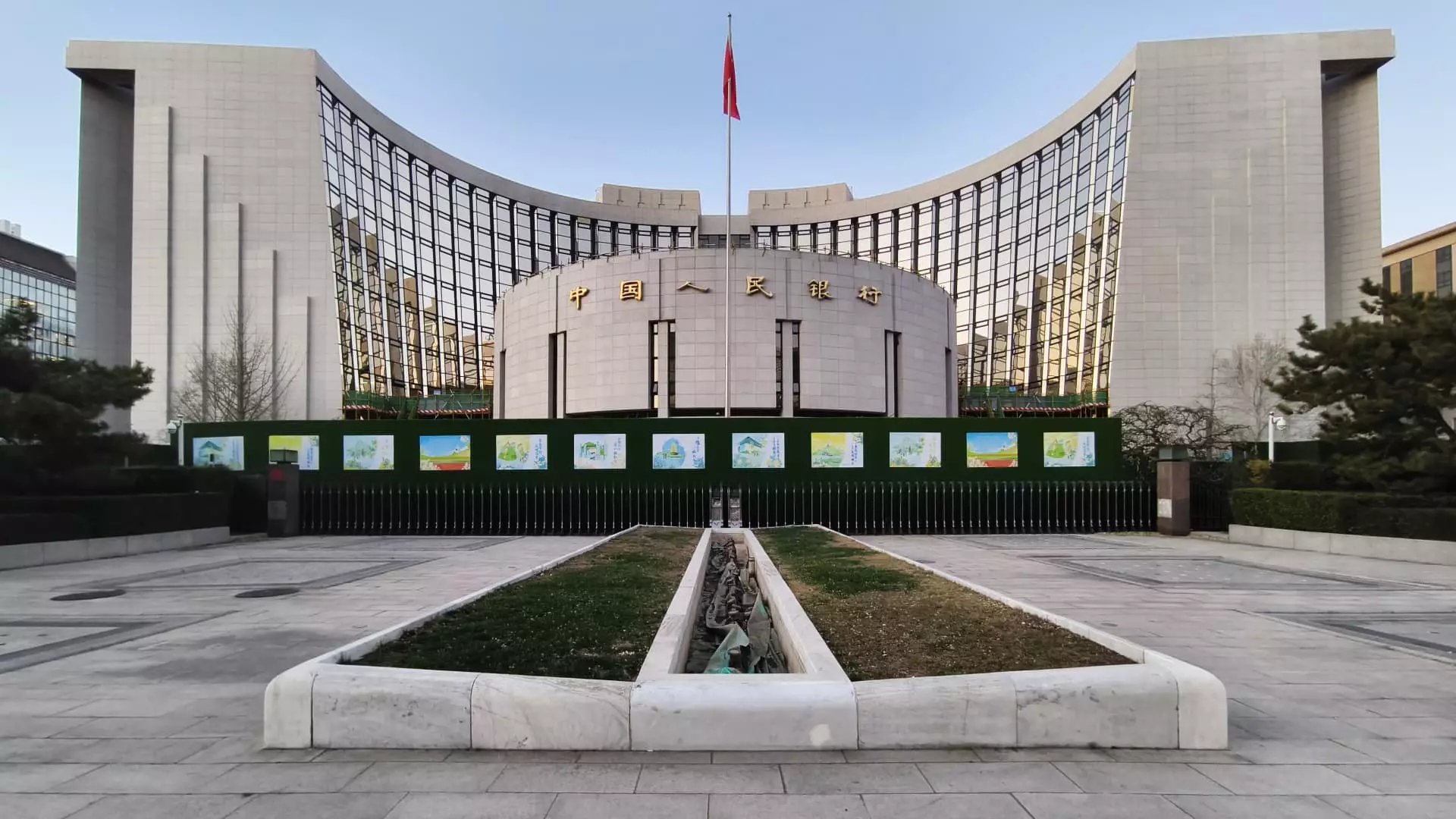As the world’s second-largest economy, China’s economic stability is crucial not just for its own financial health, but also for the global market. Recently, the People’s Bank of China (PBOC) opted to keep its primary lending rates unchanged, a decision made amid a backdrop of significant economic strain and a fluctuating currency. This move comes at a time when various economic indicators suggest that the nation is grappling with sluggish growth, rising deflationary pressures, and the added burden of a weakening yuan.
On a recent Friday, the PBOC announced it would maintain the one-year loan prime rate (LPR) at 3.1% and the five-year LPR at 3.6%. These rates are critically important as they impact corporate financing and household mortgages, respectively. Analysts had expected this decision, as reflected in a Reuters poll, indicating a consensus among economists who believe that maintaining the current rates is essential for stabilizing the economy.
The timing of this decision is particularly salient, following the United States Federal Reserve’s announcement of a 25-basis-point rate cut. This situation creates a dual challenge for China: it must navigate its internal economic woes while simultaneously responding to or counteracting changes in U.S. monetary policy.
The Fed’s adjustments to U.S. interest rates can have substantial repercussions on the global economy, including China. While some analysts believe that the Chinese central bank will remain largely immune to these U.S. moves, there is an underlying tension concerning the yuan’s valuation. The likelihood of pressure on the yuan exists as U.S. rates decrease, potentially leading investors to seek better returns in U.S. assets rather than Chinese ones.
Farzin Azarm, managing director of equities trading at Mizuho Americas, pointed out that the PBOC’s approach appears to be one of passive observation rather than active intervention. He emphasized that the primary concern for the Chinese authorities should center around managing the economic landscape and allowing the currency to adjust naturally. This marks a significant shift in policy, as previous strategies often involved deploying resources to prop up the yuan.
In light of the ferocious economic landscape, top officials in China have indicated that aggressive monetary easing measures will be part of the strategy to rejuvenate the economy. There is a clear commitment to employing a combination of monetary policy tools, including interest rate adjustments, to counteract deflation and stimulate demand. Despite the PBOC’s recent decision to hold rates steady, the recent history of cuts—especially the surprise reduction in lending rates in July—illustrates a willingness to adapt quickly to economic conditions.
However, many experts caution against relying solely on monetary policy to drive growth. Progress in China’s economy may also hinge on an increase in fiscal measures, which can stimulate growth more robustly than interest rate cuts alone. With an eye toward further economic stimulation, the government is likely to harness fiscal tools to supplement monetary policy in order to navigate both external pressures and domestic demands.
China stands at a critical juncture where its monetary policy decisions must balance the need for economic stimulus against the pressures of external market forces. With looming concerns regarding inflation coupled with a shaky property market and consumer spending, the role of the PBOC is increasingly pivotal. As the Chinese government continues to hint at measures that could support economic growth, the focus will likely pivot toward innovative fiscal strategies aimed at rejuvenating an economy yearning for stability amidst an uncertain international backdrop.
Overall, the coming months will be telling; China’s strategy in response to its economic challenges and a contested yuan will not only define its future but may also have significant implications for global economic stability. The journey forward demands keen insight and a carefully orchestrated approach, blending both fiscal measures and a judicious application of monetary policy to forge a resilient pathway for the nation’s economic revival.


Leave a Reply